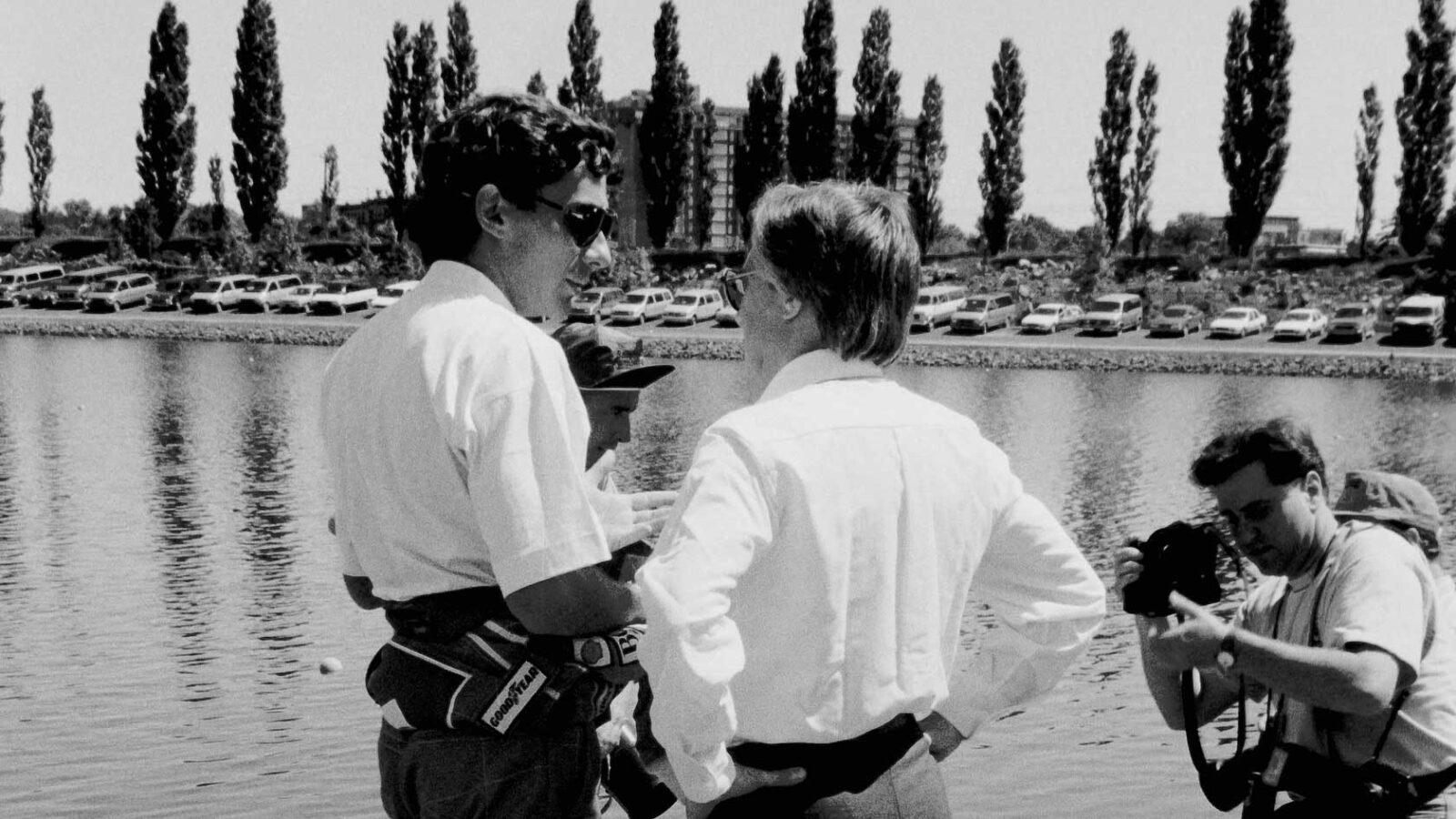Bernie Ecclestone and Ayrton Senna: Flashback
This month we are in the ‘paddock’ at the 1991 Canadian Grand Prix with Maurice Hamilton, who has spotted – and snapped –reigning F1 world champion Ayrton Senna and Bernie Ecclestone deep in conversation. The two were closer than many knew...

This is the edge of the unique and beautiful Montreal paddock, as it was in June 1991. But ‘beautiful’ only in the sense of its location on the edge of the rowing lake used during the 1976 Olympic Games. As a place of work and centre for socialising, it was hopeless.
The paddock’s open area – if you could call it that – was the towpath you can see, the inner limit of which can be determined by the fact that I had my back to one of the team motorhomes positioned more or less bumper-to-bumper directly behind the garages. The cramped conditions would eventually be alleviated by the construction of pontoons to house hospitality and team facilities along the water’s edge. The plus side was that participants in chance meetings such as this had nowhere to hide. Not that Bernie Ecclestone appears too bothered as he chats with Ayrton Senna.
Lucky!, the excellent docuseries on Ecclestone ( reviewed in Motor Sport, February 2023) reveals a largely unpublicised closeness between the two. Although Ecclestone reiterates his opinion that Alain Prost was the greatest of the many drivers he had known, it is clear he sympathised more with Senna over the calamitous confrontations between the two drivers in 1989 and 1990. “Prost complained a lot about Senna. It created a very bad atmosphere at McLaren,” was a casual but telling aside by Bernie.
It is difficult to say whether this might have been influenced in no small way by Ecclestone’s disclosure that Ayrton’s love of children extended to building a warm relationship with Tamara Ecclestone (aged six at the time of this photo). “They got on really well,” said Bernie. “Ayrton used to call from Brazil and speak to her.”
Conversation here is likely to have been focused on the latest gossip. With Senna heading for what would have been his fifth win in succession, comparisons with the recent Indy 500 were rife, the North American media pointing out that seven different drivers had swapped the lead 17 times at the Indianapolis Motor Speedway, whereas the lead had changed hands just once in the previous four grands prix. There were suggestions that F1 could benefit from the use of pace cars.
Looking back, the painful paradox is that the eventual and clumsy introduction of the F1 safety car at Imola three years later would contribute to the cataclysmic event we all remember. Even more ironic, Bernie’s subsequent ostracism from Ayrton’s funeral in São Paulo suggests the Senna family had perhaps not appreciated a bond that was closer than most of us had realised.
